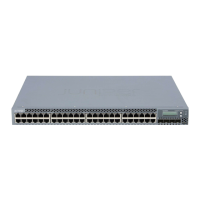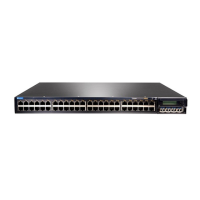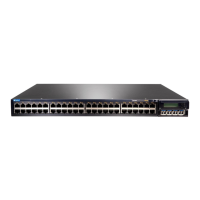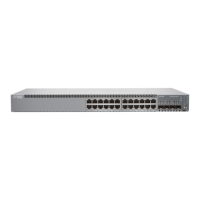This topic describes:
•
Link Aggregation Group (LAG) on page 9
•
Link Aggregation Control Protocol (LACP) on page 10
Link Aggregation Group (LAG)
You configure a LAG by specifying the link number as a physical device and then
associating a set of interfaces (ports) with the link. All the interfaces must have the same
speed and be in full-duplex mode. Juniper Networks Junos operating system (Junos OS)
for EX Series Ethernet Switches assigns a unique ID and port priority to each interface.
The ID and priority are not configurable.
The number of interfaces that can be grouped into a LAG and the total number of LAGs
supported on a switch varies according to switch model. Table 5 on page 9 lists the EX
Series switches and the maximum number of interfaces per LAG and the maximum
number of LAGs they support. MX Series devices can support up to 64 LAGs.
Table 5: Maximum Interfaces per LAG and Maximum LAGs per Switch
Maximum LAGs
Maximum Interfaces per
LAGSwitch
328EX2200
328EX3200
1118EX3300 and EX3300 Virtual
Chassis
1118EX4200 and EX4200 Virtual
Chassis
11216EX4300 and EX4300 Virtual
Chassis
1118EX4500, EX4500 Virtual
Chassis, EX4550, and EX4550
Virtual Chassis
1118EX6200
25512EX8200
23912EX8200 Virtual Chassis
When configuring LAGs, consider the following guidelines:
•
You must configure the LAG on both sides of the link.
•
You must set the interfaces on either side of the link to the same speed.
•
You can configure and apply firewall filters on a LAG.
9Copyright © 2015, Juniper Networks, Inc.
Chapter 1: Interfaces Overview
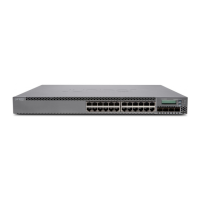
